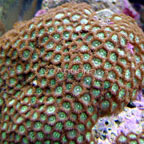Fossil records show that stony corals have existed for 230 million years. Today, there are more than 2,000 known living species of corals. Corals are responsible for building the many beautiful reefs around the world. From the Great Barrier Reef to the small patch reefs, ecosystems rely on corals for their foundation.
Corals have two distinct parts: a living component and a skeletal component. Corals are actually animals, though many take on the characteristics of plants, with their flower-like polyps. The polyp is part of the living component of a coral. Each polyp is actually a small animal with a mouth, digestive system, reproductive tract, and a simple nervous system called a nerve net. Most polyps grow in groups called colonies.
 Corals are divided into families based upon their anatomy and physiology. They also have multiple forms; some are leafy, some look like the brain or moon, and others resemble cactus. Sometimes the same species can take on multiple forms depending on its environment. These characteristics make the naming of corals very confusing. Different species can be called the same common name, and one species can have several common names.
Corals are divided into families based upon their anatomy and physiology. They also have multiple forms; some are leafy, some look like the brain or moon, and others resemble cactus. Sometimes the same species can take on multiple forms depending on its environment. These characteristics make the naming of corals very confusing. Different species can be called the same common name, and one species can have several common names.
Corals have numerous pigment types in their tissue that help to determine their coloration. Colors of corals can also differ depending upon the amounts of various minerals and vitamins included in their systems and the algae present within them. The pigment melanin, which humans and other mammals also possess, is responsible for most coral color from yellow to black. Some corals even fluoresce.
The corals fall into seven main categories:
SPS Hard Corals,
LPS Hard Corals,
Soft,
Mushroom,
Polyp, Hydrocorals, and
Sea Fans. The categorization of corals continues to be in flux; the final answer may come from DNA analysis.
|